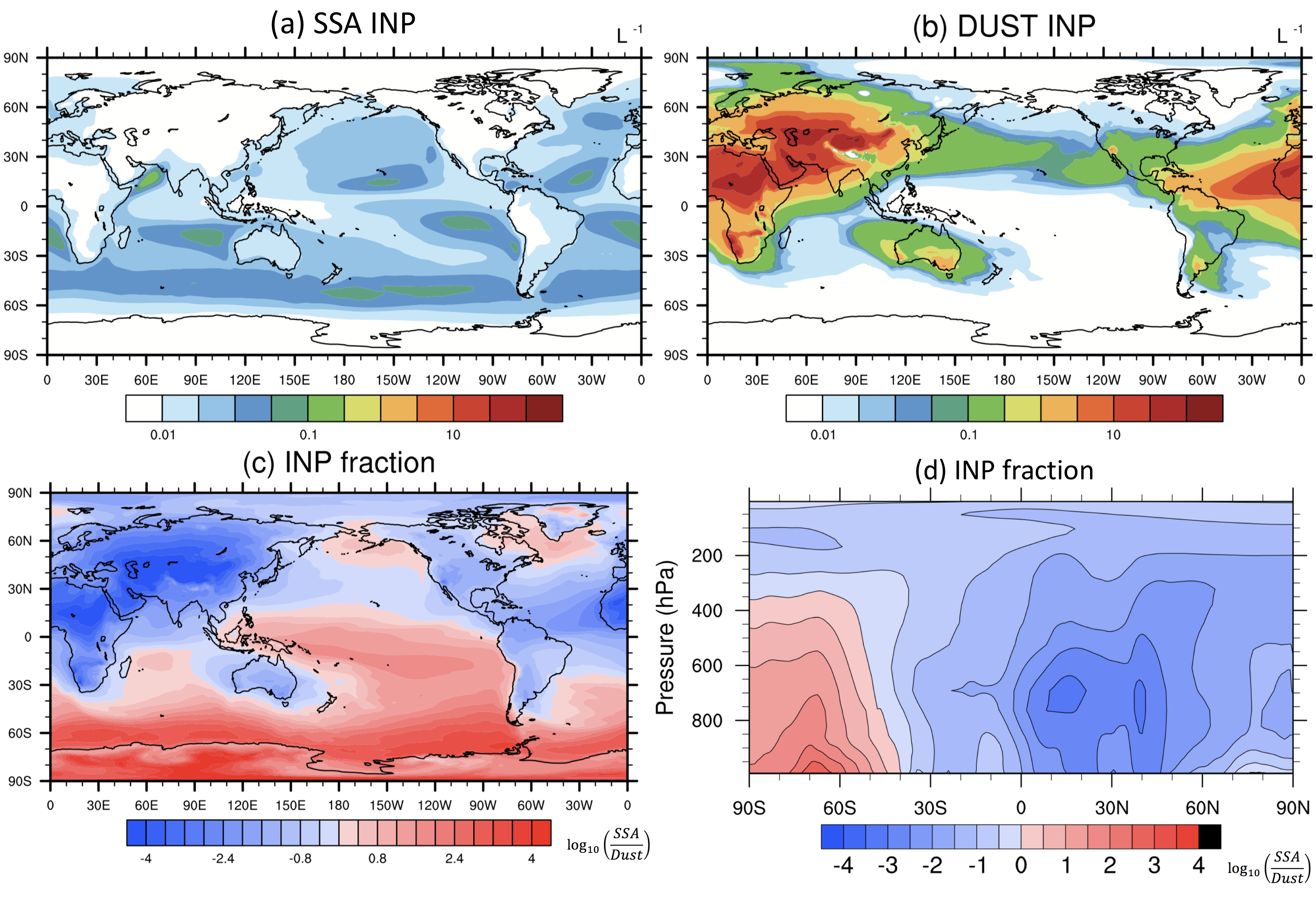Impact of sea spray ice-nucleating particles on high-latitude mixed-phase clouds
Submitter
Liu, Xiaohong — Texas A&M University
Area of research
Aerosol Processes
Journal Reference
Science
Mixed-phase clouds are frequently observed in high-latitude regions and have important impacts on the Earth’s surface energy budget and regional climate. Ice crystals play a critical role in determining cloud phase, lifetime, electrification, and radiative properties in mixed-phase clouds. How the ice crystals are formed in high-latitude mixed-phase clouds is highly uncertain. In this study, which used data from the U.S. Department of Energy's Atmospheric Radiation Measurement (ARM) mobile facility at Oliktok Point on the North Slope of Alaska, we implement marine organic aerosol (MOA) as a new aerosol species into the Community Atmosphere Model version 6 (CAM6). The importance of sea spray aerosol (SSA) including MOA as immersion mode ice nucleating particles (INPs) versus mineral dust contributions to the total INP populations is examined and constrained by comparison with field measurements. The impacts of SSA on aerosol-cloud interactions via ice nucleation and aerosol activation are quantified.
Impact
This study shows that accounting for SSA improves the agreement of model INP concentrations with measurements in the high latitudes. SSA dominates INP concentrations below 400 hPa over the Southern Ocean, while dust INPs are more abundant elsewhere. Marine INPs exert a longwave cloud radiative effect of 0.35 W m−2 over the Southern Hemisphere (20-90 ºS) in the austral winter. These findings highlight the importance for Earth system models to consider SSA INPs as a critical aerosol species for radiation-cloud-climate interactions.
Summary
CAM6 reproduces the observed seasonal cycles and magnitudes of marine organic matter. Accounting for SSA as immersion mode INPs improves the model agreement with observed INPs over the high latitudes. Marine INPs dominate primary ice nucleation below 400 hPa over the Southern Ocean, while dust INPs are more abundant elsewhere. By acting as INPs, SSA enhances the longwave cloud forcing by 0.35 W m−2 over the Southern Hemisphere (20-90 ºS) in the austral winter. The annual global mean net cloud forcing changes due to CCN and INPs of SSA are −0.35 and 0.016 W m−2, respectively.


